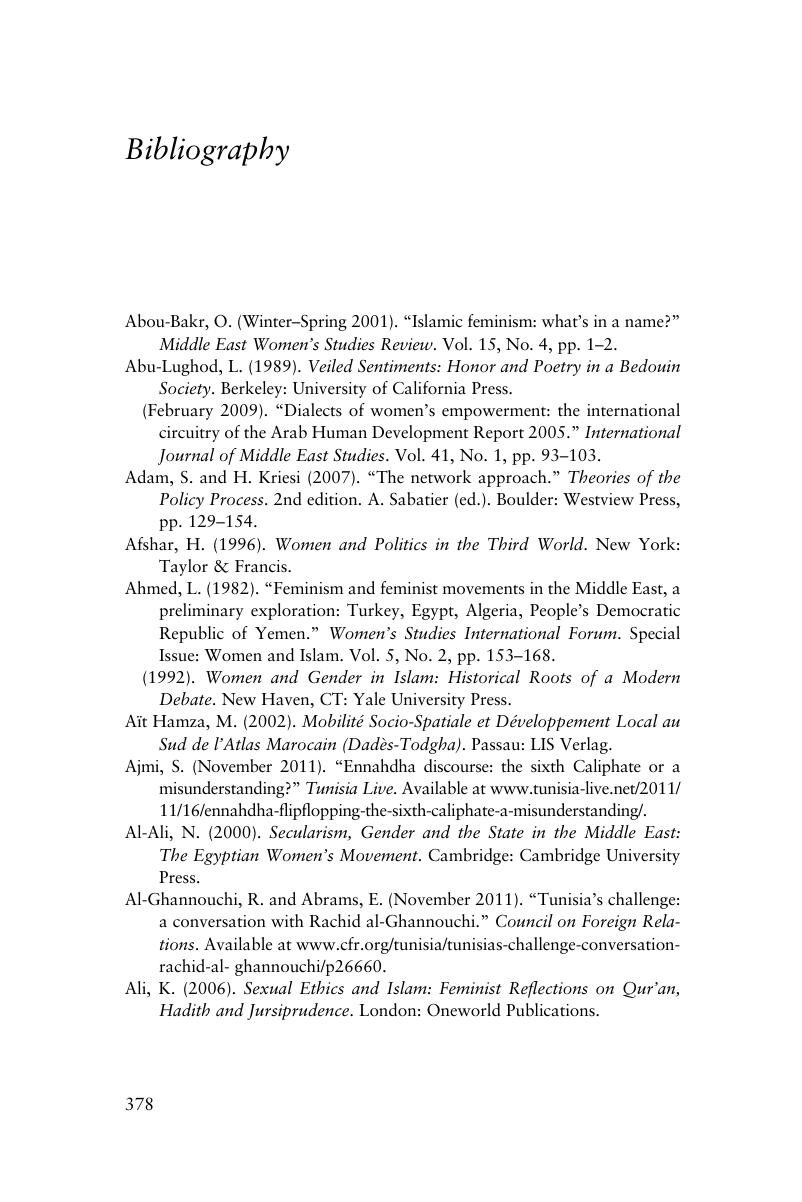Book contents
- Women and Social Change in North Africa
- Women and Social Change in North Africa
- Copyright page
- Epigraph
- Contents
- Figures
- Tables
- Contributors
- Acknowledgments
- Notes on Transliteration
- Introduction
- Part I What Is Social Change?
- Part II Religion and Social Change
- Part III Migration and Social Change
- Part IV What Is Law? Oral and Codified Law
- Bibliography
- Index
- References
Bibliography
Published online by Cambridge University Press: 21 December 2017
- Women and Social Change in North Africa
- Women and Social Change in North Africa
- Copyright page
- Epigraph
- Contents
- Figures
- Tables
- Contributors
- Acknowledgments
- Notes on Transliteration
- Introduction
- Part I What Is Social Change?
- Part II Religion and Social Change
- Part III Migration and Social Change
- Part IV What Is Law? Oral and Codified Law
- Bibliography
- Index
- References
Summary

- Type
- Chapter
- Information
- Women and Social Change in North AfricaWhat Counts as Revolutionary?, pp. 378 - 393Publisher: Cambridge University PressPrint publication year: 2018



